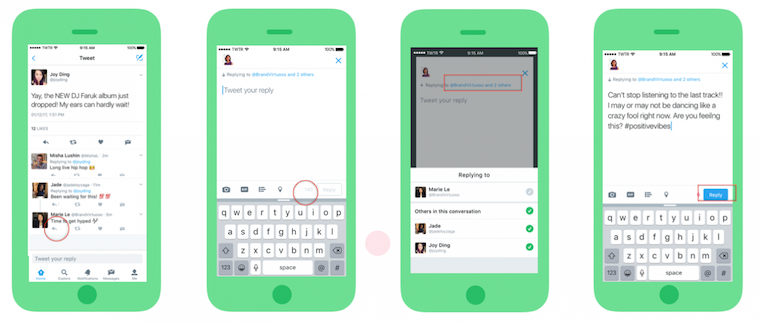Nearly a year ago, we shared a Twitter announcement about a planned increase in the number of characters users can have in a tweet. One of the features announced, that @usernames would not count toward a tweet’s limit of 140 characters, did not make the cut until yesterday. Now, according to a Twitter announcement, when you reply to someone or a group, @usernames won’t count toward your Tweet’s 140 character limit. (Including the “@”.) But not everyone likes the new feature.
Here’s how it works
- Who you are replying to will appear above the Tweet text rather than within the Tweet text itself, so you have more characters to have conversations.
- You can tap on “Replying to…” to see and control who’s part of your conversation.
- When reading a conversation, you’ll see what people are saying, rather than seeing lots of @usernames at the start of a Tweet.

According to the announcement, “it’s now easier to follow a conversation, so you can focus on what a discussion is about, and who is having it. Also, with all 140 characters for your replies, you have more room to participate in group conversations.”
What (finally) doesn’t count against the 140 character limit
The “@” | When you use the “@” to identify a user, the “@” won’t count against the 140-character limit
The letters in a username | People with a long username can now say as much as those with a short one.
Attached media | (Released earlier) When you add any of the following to a tweet, they won’t count against the 140-character limit: photos, GIFs, videos, polls, or Tweet quotes
Availability | The update started rolling out on March 30 on twitter.com as well as on Twitter for iOS and Android. You must update your app to see the new feature.
Not everyone’s a fan of the new feature
As discovered by Motherboard.Vice.com‘s Sarah Jeong, the new feature allows someone to add up to 50 handles (@usernames) in a thread. Worse, she says, it makes it very, very difficult to untag people. The result:

istock
